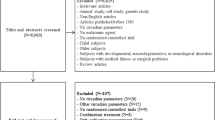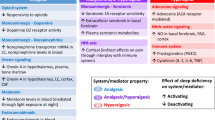Abstract
Melatonin, a chronobiotic that participates in the control of the circadian system, is known for its sleep-promoting effects, which include shortening of sleep latency and lengthening of sleep duration. As a result of its short half-life, melatonin does not exhibit undesirable side effects, and its broad applicability for a variety of sleep problems has been the focus of numerous scientific studies. Melatonin has not, however, received regulatory approval from the US FDA as a drug, because it can be sold freely as a food supplement. Consequently, there has been an active search for patentable melatonin receptor ligands in recent years. Ramelteon, an agonist that acts solely on melatonin MT1 and MT2 receptors, is of particular interest, and preliminary research indicates that it holds considerable promise for clinical applications. Ramelteon has been shown to induce sleep initiation and maintenance in various animal models and in clinical trials. In chronic insomnia, ramelteon decreases sleep latency and increases total sleep time and sleep efficiency, without causing hangover, addiction or withdrawal effects. Ramelteon is thought to promote sleep by influencing homeostatic sleep signaling mediated by the suprachiasmatic nucleus. Although ramelteon's metabolism and pharmacokinetics differ from those of melatonin, its safety seems to be sufficient for short-term application. Its long-term effects remain to be determined.
Key Points
-
Ramelteon acts as an MT1 and MT2 melatonin receptor agonist, showing higher affinities for these receptors than does the natural ligand
-
Ramelteon induces sleep initiation and maintenance, as demonstrated in animal models and clinical trials
-
Ramelteon is efficient in treating chronic insomnia, without causing addiction, hangover or withdrawal effects
-
Ramelteon is assumed to promote sleep efficacy by influencing homeostatic as well as chronobiotic sleep regulation
-
A major metabolite of ramelteon, which accumulates to levels 10-fold higher than the parent drug, contributes to the drug's effects
-
Safety of ramelteon seems to be sufficient after short-term administration, but long-term treatment of elderly or unwell individuals requires further study
This is a preview of subscription content, access via your institution
Access options
Subscribe to this journal
Receive 12 print issues and online access
$209.00 per year
only $17.42 per issue
Buy this article
- Purchase on Springer Link
- Instant access to full article PDF
Prices may be subject to local taxes which are calculated during checkout

Similar content being viewed by others
References
Reiter RJ (2003) Melatonin: clinical relevance. Best Pract Res Clin Endocrinol Metab 17: 273–285
Pandi-Perumal SR et al. (2006) Melatonin: nature's most versatile biological signal? FEBS J 273: 2813–2838
Tricoire H et al. (2003) Origin of cerebrospinal fluid melatonin and possible function in the integration of photoperiod. Reprod Suppl 61: 311–321
Arendt J and Skene DJ (2005) Melatonin as a chronobiotic. Sleep Med Rev 9: 25–39
Haimov I et al. (1995) Melatonin replacement therapy of elderly insomniacs. Sleep 18: 598–603
Leger D et al. (2004) Nocturnal 6-sulfatoxymelatonin excretion in insomnia and its relation to the response to melatonin replacement therapy. Am J Med 116: 91–95
Zhdanova IV et al. (2001) Melatonin treatment for age-related insomnia. J Clin Endocrinol Metab 86: 4727–4730
Lewy AJ et al. (1992) Melatonin shifts human circadian rhythms according to a phase-response curve. Chronobiol Int 9: 380–392
Nagtegaal E et al. (1998) Correlation between concentrations of melatonin in saliva and serum in patients with delayed sleep phase syndrome. Ther Drug Monit 20: 181–183
Kayumov L et al. (2001) A randomized, double-blind, placebo-controlled crossover study of the effect of exogenous melatonin on delayed sleep phase syndrome. Psychosom Med 63: 40–48
Ivanenko A et al. (2003) Melatonin in children and adolescents with insomnia: a retrospective study. Clin Pediatr (Phila) 42: 51–58
Weiss M et al. (2006) Sleep hygiene and melatonin treatment for children and adolescents with ADHD and initial insomnia. J Am Acad Child Adolesc Psychiatry 45: 512–519
Jan MM (2000) Melatonin for the treatment of handicapped children with severe sleep disorders. Pediatr Neurol 23: 229–232
van den Heuvel CJ et al. (2005) Melatonin as a hypnotic: con. Sleep Med Rev 9: 71–80
Buscemi N et al. (2006) Efficacy and safety of exogenous melatonin for secondary sleep disorders and sleep disorders accompanying sleep restriction: meta-analysis. BMJ 332: 385–393
Turek FW and Gillette MU (2004) Melatonin, sleep, and circadian rhythms: rationale for development of specific melatonin agonists. Sleep Med 5: 523–532
Bellon A (2006) Searching for new options for treating insomnia: are melatonin and ramelteon beneficial? J Psychiatr Pract 12: 229–243
Dubocovich ML (2006) Agomelatine targets a range of major depressive disorder symptoms. Curr Opin Investig Drugs 7: 670–680
Claustrat B et al. (2005) The basic physiology and pathophysiology of melatonin. Sleep Med Rev 9: 11–24
Reppert SM et al. (1996) Melatonin receptors step into the light: cloning and classification of subtypes. Trends Pharmacol Sci 17: 100–102
Liu C et al. (1997) Molecular dissection of two distinct actions of melatonin on the suprachiasmatic circadian clock. Neuron 19: 91–102
Jin X et al. (2003) Targeted disruption of the mouse Mel1b melatonin receptor. Mol Cell Biol 23: 1054–1060
Waldhauser F et al. (1990) Sleep laboratory investigations on hypnotic properties of melatonin. Psychopharmacology (Berl) 100: 222–226
Dollins AB et al. (1994) Effect of inducing nocturnal serum melatonin concentrations in daytime on sleep, mood, body temperature, and performance. Proc Natl Acad Sci USA 91: 1824–1828
Zhdanova IV and Tucci V (2003) Melatonin, circadian rhythms, and sleep. Curr Treat Options Neurol 5: 225–229
Wyatt JK et al. (2006) Sleep-facilitating effect of exogenous melatonin in healthy young men and women is circadian-phase dependent. Sleep 29: 609–618
Garfinkel D and Zisapel N (1998) The use of melatonin for sleep. Nutrition 14: 53–55
Brzezinski A et al. (2005) Effects of exogenous melatonin on sleep: a meta-analysis. Sleep Med Rev 9: 41–50
Yukuhiro N et al. (2004) Effects of ramelteon (TAK-375) on nocturnal sleep in freely moving monkeys. Brain Res 1027: 59–66
Buysse D et al. (2005) Fresh from the pipeline: ramelteon. Nat Rev Drug Discov 4: 881–882
Roth T et al. (2005) Ramelteon (TAK-375), a selective MT1/MT2-receptor agonist, reduces latency to persistent sleep in a model of transient insomnia related to a novel sleep environment. Sleep 28: 303–307
Roth T et al. (2006) Effects of ramelteon on patient-reported sleep latency in older adults with chronic insomnia. Sleep Med 7: 312–318
Karim A et al. (2006) Disposition kinetics and tolerance of escalating single doses of ramelteon, a high-affinity MT1 and MT2 melatonin receptor agonist indicated for treatment of insomnia. J Clin Pharmacol 46: 140–148
Wurtman R (2006) Ramelteon: a novel treatment for the treatment of insomnia. Expert Rev Neurother 6: 957–964
VHA Pharmacy Benefits Management Strategic Healthcare Group and The Medical Advisory Panel (online December 2005) National PBM Drug Monograph: ramelteon (Rozerem™) [http://www.pbm.va.gov/monograph/Ramelteon.pdf] (accessed 23 February 2007)
Hartter S et al. (2000) Increased bioavailability of oral melatonin after fluvoxamine coadministration. Clin Pharmacol Ther 67: 1–6
Miyamoto M et al. (2004) The sleep-promoting action of ramelteon (TAK-375) in freely moving cats. Sleep 27: 1319–1325
Miyamoto M (2006) Effect of ramelteon (TAK-375), a selective MT1/MT2 receptor agonist, on motor performance in mice. Neurosci Lett 402: 201–204
Hirai K et al. (2005) Ramelteon (TAK-375) accelerates reentrainment of circadian rhythm after a phase advance of the light-dark cycle in rats. J Biol Rhythms 20: 27–37
France CP et al. (2006) Acute and chronic effects of ramelteon in rhesus monkeys (Macaca mulatta): dependence liability studies. Behav Neurosci 120: 535–541
Erman M et al. (2006) An efficacy, safety, and dose-response study of ramelteon in patients with chronic primary insomnia. Sleep Med 7: 17–24
Dubocovich ML and Markowska M (2005) Functional MT1 and MT2 melatonin receptors in mammals. Endocrine 27: 101–110
Edgar DM et al. (1993) Effect of SCN lesions on sleep in squirrel monkeys: evidence for opponent processes in sleep–wake regulation. J Neurosci 13: 1065–1079
Fuller PM et al. (2006) Neurobiology of the sleep–wake cycle: sleep architecture, circadian regulation, and regulatory feedback. J Biol Rhythms 21: 482–493
Cajochen C et al. (2003) Role of melatonin in the regulation of human circadian rhythms and sleep. J Neuroendocrinol 15: 432–437
van Someren EJ (2004) Thermoregulation as a sleep signaling system. Sleep Med Rev 8: 327–328
Raymann RJ et al. (2005) Cutaneous warming promotes sleep onset. Am J Physiol Regul Integr Comp Physiol 288: R1589–R1597
Gubin DG et al. (2006) The circadian body temperature rhythm in the elderly: effect of single daily melatonin dosing. Chronobiol Int 23: 639–658
Lin MT and Chuang JI (2002) Melatonin potentiates 5-HT1A receptor activation in rat hypothalamus and results in hypothermia. J Pineal Res 33: 14–19
Chou TC et al. (2003) Critical role of dorsomedial hypothalamic nucleus in a wide range of behavioral circadian rhythms. J Neurosci 23: 10691–10702
Lu J et al. (2001) Contrasting effects of ibotenate lesions of the paraventricular nucleus and subparaventricular zone on sleep–wake cycle and temperature regulation. J Neurosci 21: 4864–4874
Cajochen C (2005) TAK-375 Takeda. Curr Opin Investig Drugs 6: 114–121
Rozerem ™ (ramelteon tablets) package insert (Takeda Pharmaceuticals America, Inc. 2005)
Zlotos DP (2005) Recent advances in melatonin receptor ligands. Arch Pharm (Weinheim) 338: 229–247
Author information
Authors and Affiliations
Corresponding author
Ethics declarations
Competing interests
The authors declare no competing financial interests.
Rights and permissions
About this article
Cite this article
Pandi-Perumal, S., Srinivasan, V., Poeggeler, B. et al. Drug Insight: the use of melatonergic agonists for the treatment of insomnia—focus on ramelteon. Nat Rev Neurol 3, 221–228 (2007). https://doi.org/10.1038/ncpneuro0467
Received:
Accepted:
Issue Date:
DOI: https://doi.org/10.1038/ncpneuro0467
This article is cited by
-
Significance of Melatonin in the Regulation of Circadian Rhythms and Disease Management
Molecular Neurobiology (2024)
-
Melatonergic Sleep Promotion: Fundamental Chronobiological Issues Concerning Sleep Onset and Maintenance, Dose and Duration of Action
Sleep and Vigilance (2018)
-
The effects of acute treatment with ramelteon, triazolam, and placebo on driving performance, cognitive function, and equilibrium function in healthy volunteers
Psychopharmacology (2015)
-
Influence of the novel antidepressant and melatonin agonist/serotonin2C receptor antagonist, agomelatine, on the rat sleep–wake cycle architecture
Psychopharmacology (2009)



